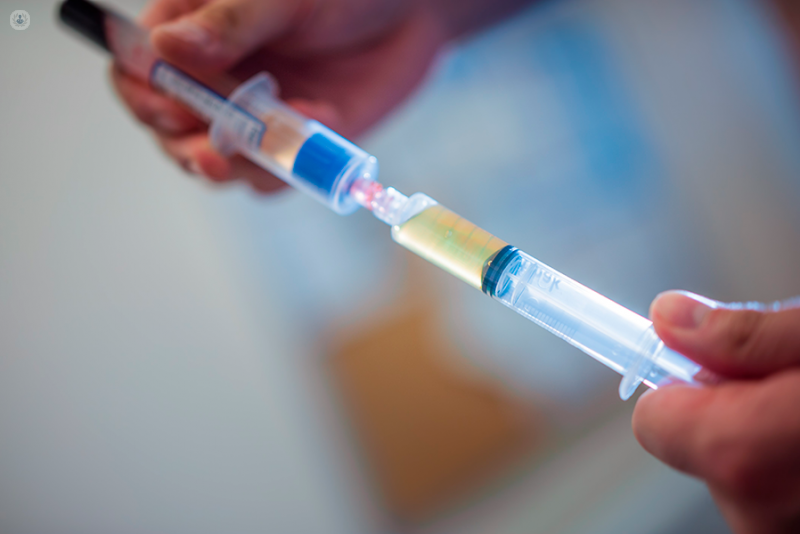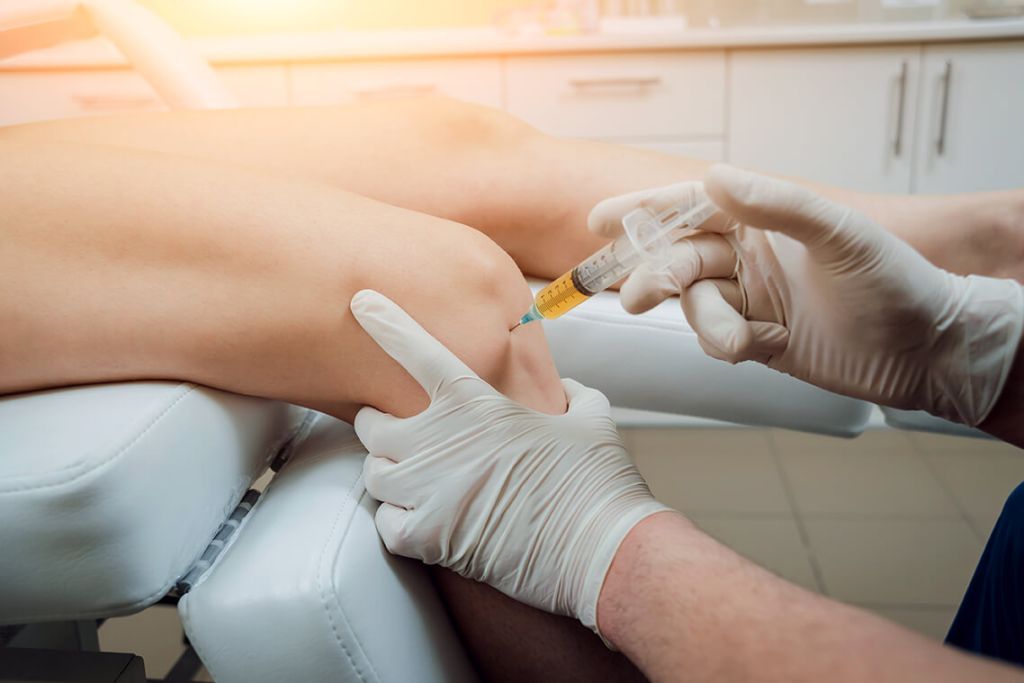Platelet-rich plasma therapy, often known as PRP therapy, is a type of treatment that has been increasingly popular over the past several years. It includes injecting concentrated platelets or platelets that are gathered together closely and growth factors extracted from the patient’s own blood into the damaged area of the body in order to stimulate the body’s natural healing mechanisms. PRP therapy has been demonstrated to be beneficial in treating a variety of conditions affecting the joints of the body, specifically knee pain and injuries. This is particularly true in the treatment of knee injuries. This article will cover all you need to know about platelet-rich plasma (PRP) treatment for joints and knees, including how the treatment works, the benefits and hazards of the treatment, and more.
What is PRP therapy?
In platelet-rich plasma therapy, a little amount of the patient’s own blood is drawn, processed in such a way as to concentrate the platelets and growth factors, and then injected into the area that is in need of treatment. Platelets and PRP growth factors that have been concentrated aid to boost the body’s natural healing processes, which in turn promotes the repair and regeneration of damaged tissue.
How does platelet-rich plasma therapy for joint and knee pain work?
PRP therapy has been demonstrated to be an effective treatment for joint and knee pain. This is accomplished through the therapy’s ability to promote the healing of injured tissue and to reduce inflammation. When platelet-rich plasma (PRP) is injected into the damaged area, it promotes the formation of new blood vessels, collagen, and other key components of healthy tissue. This in turn enhances the body’s natural healing mechanisms, allowing it to mend itself more quickly.
PRP therapy may be very helpful for patients suffering from knee pain as well as injuries to the knee. The cartilage, ligaments, and tendons that make up the knee joint are all vulnerable to damage and deterioration because the knee is formed of a variety of tissues, including the joint itself. PRP therapy may help reduce pain and improve general joint function by promoting the formation of healthy tissue in these places, helping to generate healthy new tissue.
What are the advantages of using PRP to treat joint and knee conditions?
The following are some of the benefits of using platelet-rich plasma to treat joints and knees:
PRP therapy has been demonstrated to reduce pain and inflammation in the afflicted joint, which can assist improve mobility and overall quality of life. PRP therapy has been shown to reduce pain and inflammation in the affected joint.
PRP therapy can help enhance healing and tissue regeneration in the affected area by stimulating the formation of new blood vessels, collagen, and other critical components of healthy tissue. This growth can help speed up the body’s natural ability to repair and replace damaged or diseased tissue.
Non-invasive and low-risk: Platelet-rich plasma (PRP) therapy is a process that is only minimally invasive and carries a low risk of adverse effects or consequences.
PRP therapy involves extremely little to no downtime, and patients can often return to their daily activities immediately following the operation. This results in a short recovery time for the patient.
Results that can persist for a long time PRP therapy can have beneficial effects that can endure for a long time, with many patients reporting to have improved joint function for months or even years after treatment has been completed.
What are the potential drawbacks of using PRP to treat the joint and the knee?
Due to the fact that the therapy employs the patient’s own blood and poses no danger of side effects or consequences, the risks associated with PRP treatment for joints and knees are generally rather low.
In addition, some patients may have moderate soreness or edema following the operation; however, these symptoms normally resolve themselves within a few days at the most.
How is platelet-rich plasma treatment administered to the joint and the knee?
The following procedures are generally involved in PRP treatment for the knee and joints:
The patient has their blood obtained and then the blood is treated in a centrifuge to concentrate the platelets and growth factors.
After the damaged joint has been cleansed, a local anesthetic is applied to numb it.
In order to guarantee the placement of the concentrated PRP injection, the afflicted area is first guided by ultrasonography before receiving the treatment.
After the procedure, the patient could be given instructions to take it easy for a little while, but in most cases, they are free to immediately resume their regular activities.
What are you waiting for? Consult Nexus Clinic now!









